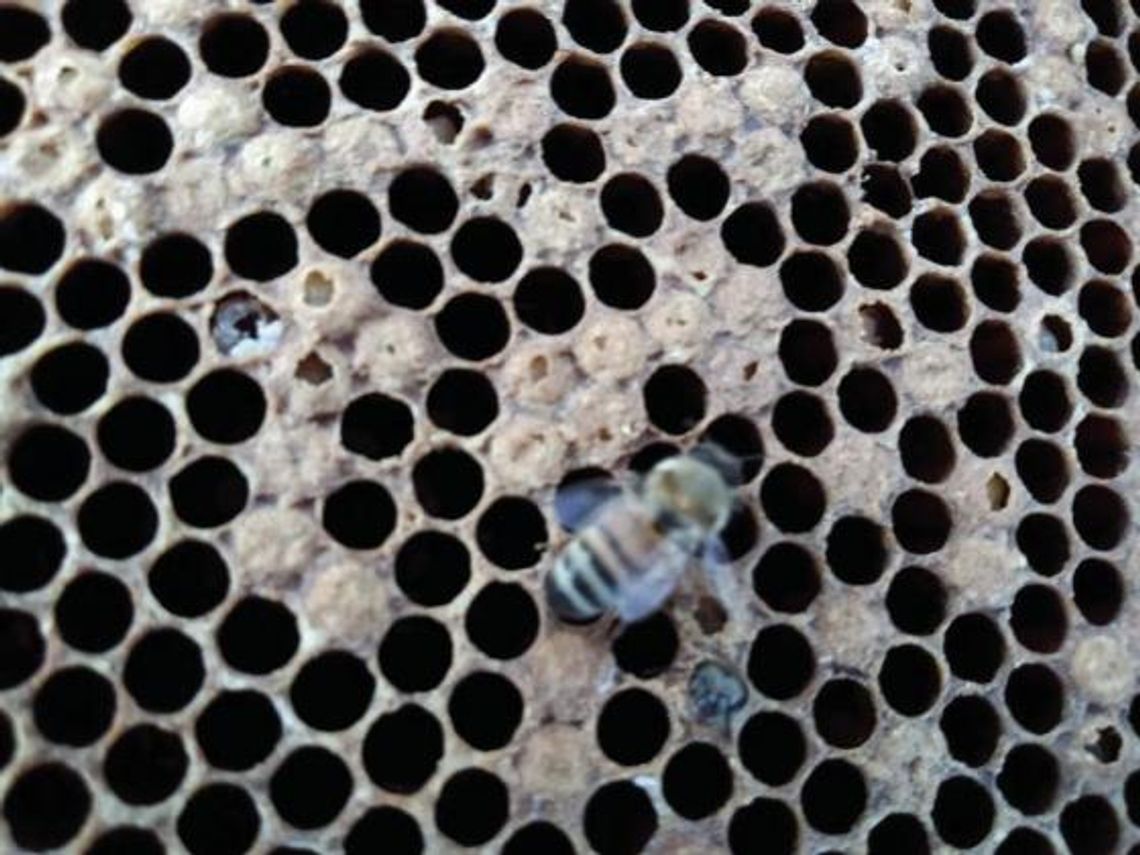A person must be a little crazy to keep stinging insects. Some days, the honeybees are busy, work-focused, and very tolerant of beekeeper presence. Other days, honeybees let beekeepers know that the bees are doing just fine by themselves, thank you very much, and it’s best to close up the hive and walk way.
We are raising new colonies of honeybees (“nucleus colonies” or “nucs”) to sell to friends and to new beekeepers. God, Himself, does it every year when large colonies divide and then fly to a new location thereby producing a new colony of honeybees. Humans call this activity swarming. Beekeepers intentionally divide colonies, as a way to prevent swarming; it’s no fun to watch 50% of your workers fly away thinking to yourself, “There goes my honey crop from that colony this year!” This beekeeper induced splitting or division of a colony produces new nucs, a honeybee colony in miniature. Raising nucs is not for the faint of heart. It is a simple-sounding process, but it is not easy. We invest hundreds of beekeepers- hours to produce about twenty saleable nucs. No, the per hour wage for a beekeeper is not above the Federal minimum wage!
We spent four hours in the new nucs yesterday to check the status of their developing queens and to supplement their available resources of honey, nectar, pollen, brood, and bees. Sue presided over the nucs, the resource receivers, while Roger handled the large colonies, the resource suppliers. Sue watched individual bees at work and then found a phone and captured this photo of their efforts. Photography in a bee suit with sticky leather gloves is not easy! Honeybees are not born. They do not hatch. They do not come to life. There are no baby bees. Honeybees are insects, so they go through complete metamorphosis, just like butterflies, to emerge from their cocoons as full-functioning adults. It is amazing to watch bees emerge, and it does not require any outside intervention. The emerging honeybees in this photo are chewing openings in the wax covering of their pupation cell and then slowly pulling themselves out of the cells to stand on the wax comb. The process takes about 30 minutes and no help is offered by the other workers. Just as young chicks benefit from the struggle to hatch from their egg, so the emerging honeybees benefit from the struggle as well. If you look very carefully next to the circle in the upper left you’ll see several cells the bees are capping off so the larvae inside can begin the pupation process. To produce a worker honeybee takes a total of 21 days, three days as an egg, six days as a larvae, and twelve days as a pupae. Most people want to help those who are struggling. Often, help is good and right. Our grandparents taught us to offer a cup of cool water and a meat loaf sandwich to someone without asking too many questions. Our parents picked us up when we fell, gave us reassuring hugs, and offered the occasional twenty- dollar bill for gasoline during college days. Our elementary teachers taught us to look out for each other on the playground and to wait for the littlest. Our coaches reminded us that no one leaves the court – or the pool – until everyone finishes the workout. Our friends notice when we have temporary extra heavy burdens, and they come alongside to help.





